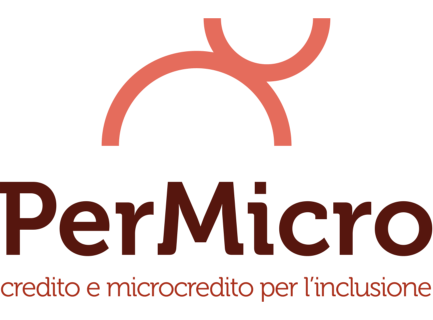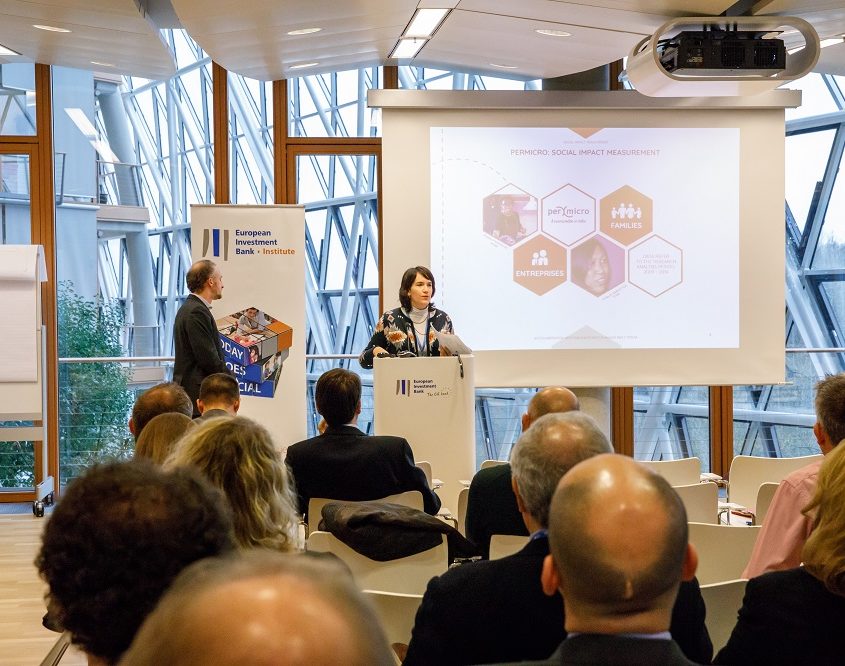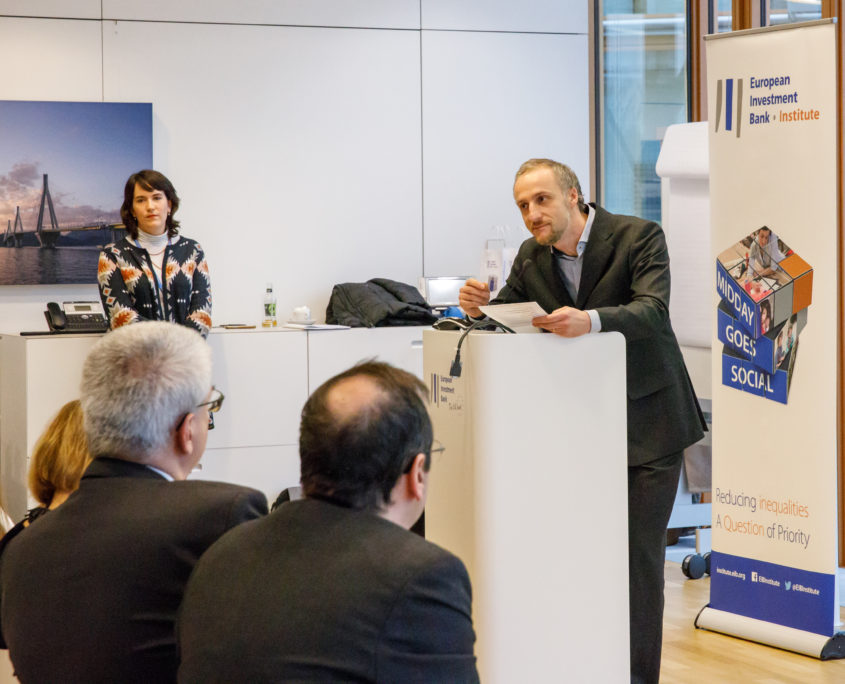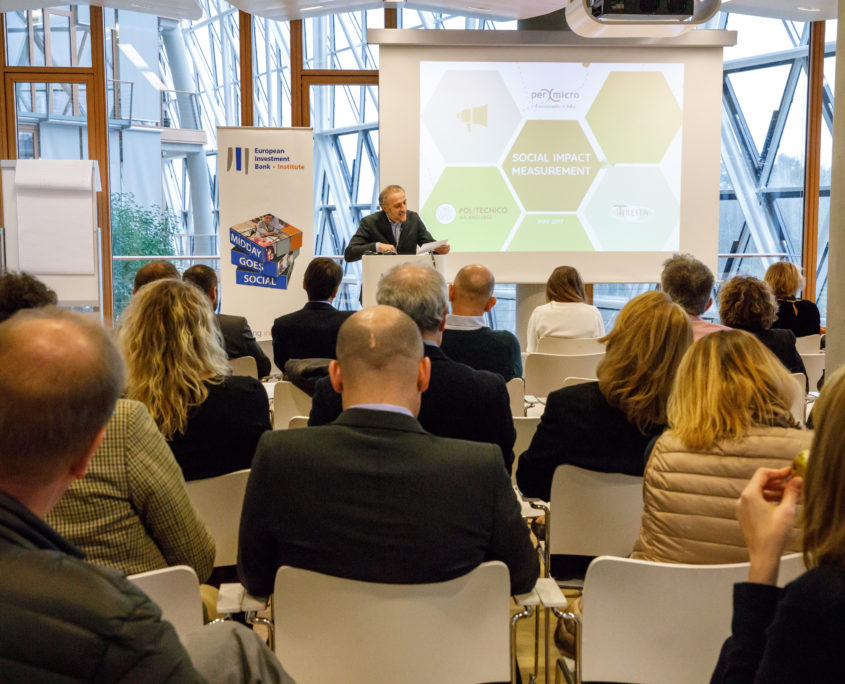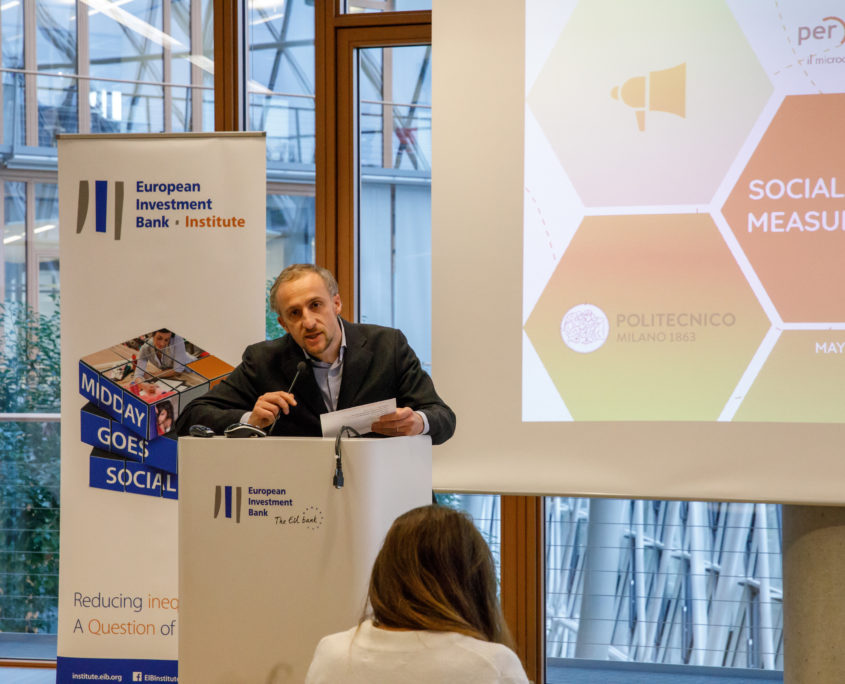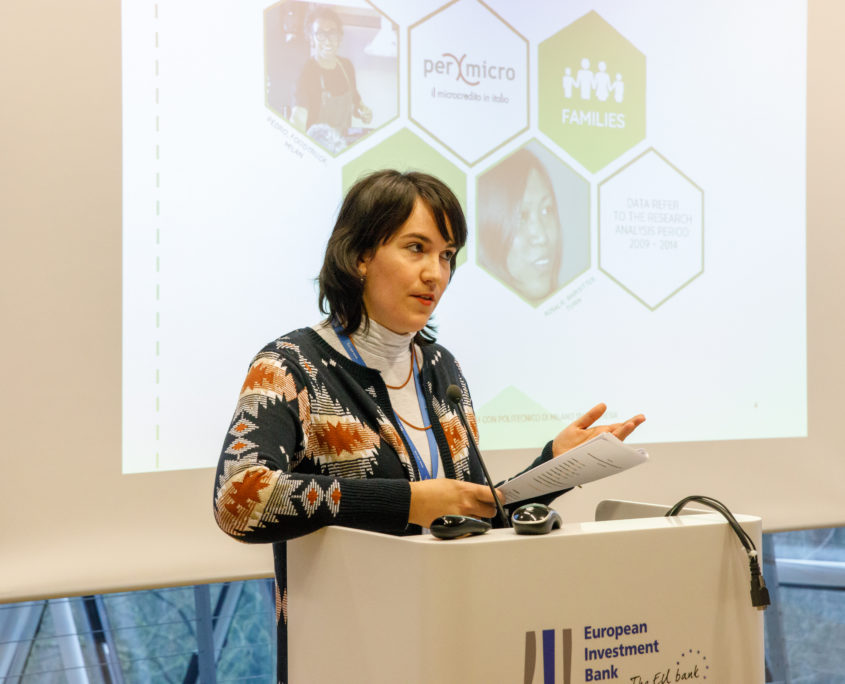How much impact do you expect from an MFI?
The case study of Italian-based PerMicro
PerMicro will hold a seminar at the European Investment Bank Institute on 14th December 2017, within the framework “European Initiatives for the Common Good”.
PerMicro is the first Italian company specialised in offering microcredit to people who do not have access to traditional credit channels because of insufficient credit history or precarious working position.
The project conducted by Tiresia research group of the Polytechnic of Milan aims at developing an ad hoc methodology to measure the social impact generated by PerMicro activities.
This methodology contributed to establish effects and benefits generated by the organization on direct beneficiaries and community in the long period.
The methodology was developed in three steps:
1. the analysis of existing approaches and tools related to performance and impact measurement of social entrepreneurship organizations;
2. the evaluation and selection of existing instruments in answer to the needs and peculiarities of PerMicro;
3. the implementation of the chosen tools to design an ad hoc methodology to measure PerMicro’s social impact.
The seminar will be focused on the presentation of the social impact generated by the loans that PerMicro disbursed in the period of 2009-2014. Which numbers do you expect? Come and see!
